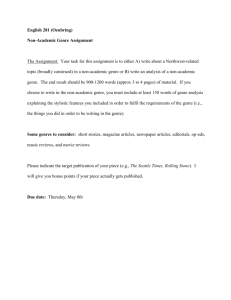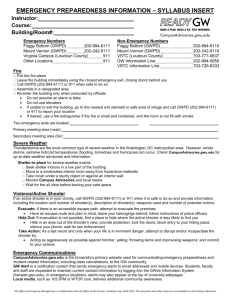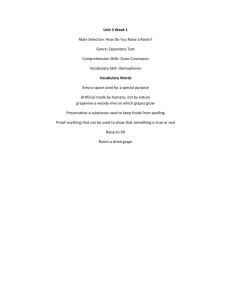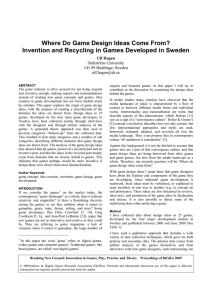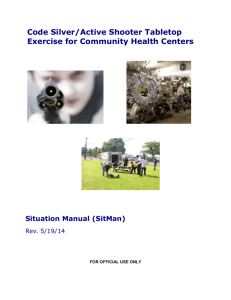Game Concept
advertisement
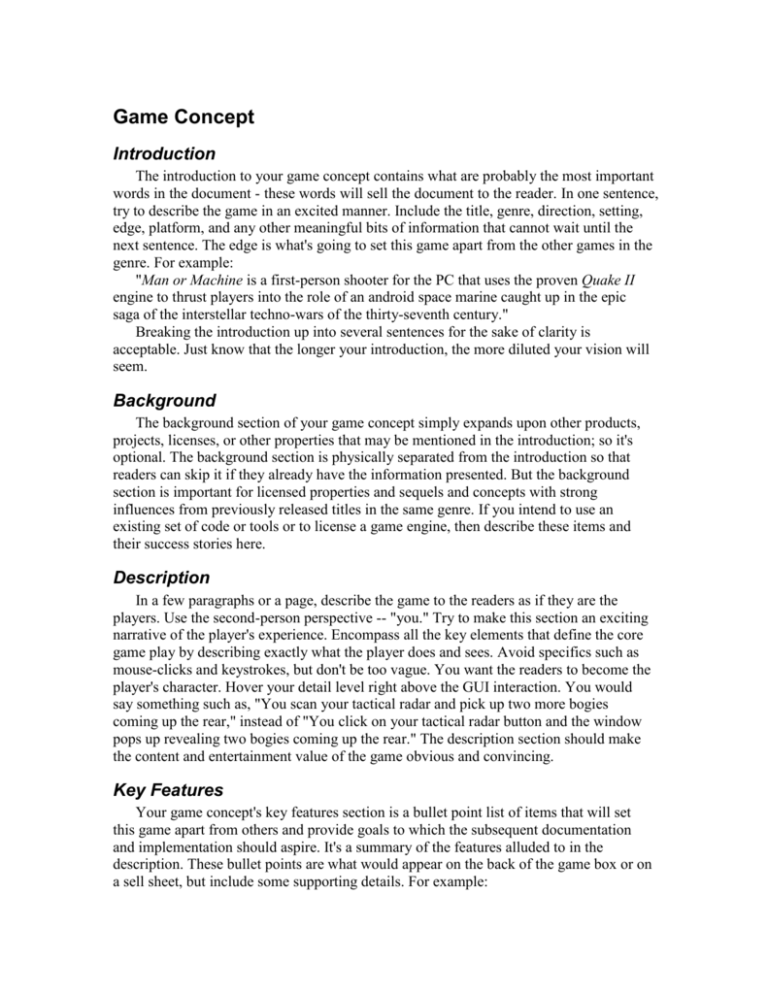
Game Concept Introduction The introduction to your game concept contains what are probably the most important words in the document - these words will sell the document to the reader. In one sentence, try to describe the game in an excited manner. Include the title, genre, direction, setting, edge, platform, and any other meaningful bits of information that cannot wait until the next sentence. The edge is what's going to set this game apart from the other games in the genre. For example: "Man or Machine is a first-person shooter for the PC that uses the proven Quake II engine to thrust players into the role of an android space marine caught up in the epic saga of the interstellar techno-wars of the thirty-seventh century." Breaking the introduction up into several sentences for the sake of clarity is acceptable. Just know that the longer your introduction, the more diluted your vision will seem. Background The background section of your game concept simply expands upon other products, projects, licenses, or other properties that may be mentioned in the introduction; so it's optional. The background section is physically separated from the introduction so that readers can skip it if they already have the information presented. But the background section is important for licensed properties and sequels and concepts with strong influences from previously released titles in the same genre. If you intend to use an existing set of code or tools or to license a game engine, then describe these items and their success stories here. Description In a few paragraphs or a page, describe the game to the readers as if they are the players. Use the second-person perspective -- "you." Try to make this section an exciting narrative of the player's experience. Encompass all the key elements that define the core game play by describing exactly what the player does and sees. Avoid specifics such as mouse-clicks and keystrokes, but don't be too vague. You want the readers to become the player's character. Hover your detail level right above the GUI interaction. You would say something such as, "You scan your tactical radar and pick up two more bogies coming up the rear," instead of "You click on your tactical radar button and the window pops up revealing two bogies coming up the rear." The description section should make the content and entertainment value of the game obvious and convincing. Key Features Your game concept's key features section is a bullet point list of items that will set this game apart from others and provide goals to which the subsequent documentation and implementation should aspire. It's a summary of the features alluded to in the description. These bullet points are what would appear on the back of the game box or on a sell sheet, but include some supporting details. For example: Advanced Artificial Intelligence (AI): Man or Machine will recreate and advance the challenging and realistic AI that made Half-Life game of the year. Determining how many features to list is a delicate balancing act. Listing only one or two key features is a bad idea if you're doing anything more complex than a puzzle game; listing more than a page of features implies that the project would be a Herculean task and may scare off the bean counters. Listing too few features might sell your concept short; listing too many waters down the concepts' strongest features. Keep in mind that you need not list features that are given, such as "great graphics" and "compelling music," unless you really think such features are going to be far superior to those of the competition. Great graphics, compelling music, and the like are the understood goals of every game project. On the other hand, if the particular flavor of graphics and music provides your game with an edge in the market, then you should spell that out. Genre In a few words, define the game genre and flavor. Use existing games' classifications from magazines and awards as a guide. For example, you could choose one of the following: sports, real-time strategy, first-person shooter, puzzle, racing simulation, adventure, role-playing game, flight simulation, racing shooter, god simulation, strategy, action-strategy, turn-based strategy, side-scrolling shooter, edutainment, or flight shooter. Then you can refine your game's niche genre with these or other words for flavor: modern, WWII, alternate reality, post-apocalyptic, futuristic, sci-fi, fantasy, medieval, ancient, space, cyberpunk, and so on. Platform In a few words, list the target platform(s). If you think the game concept is applicable to multiple platforms, you should also indicate which platform is preferred or initial. If you intend multiplayer support on the Internet, indicate that as well. Concept Art (Optional) A little bit of art helps sell the idea and puts the readers in the right frame of mind. Use art to convey unique or complex ideas. Screen mock-ups go a long way to express your vision. Art for the game concept may be beyond most employees' capabilities, so requiring it would limit the number of submissions; thus, it is optional. If a concept has merit, the art can come later from a skilled resource. Often art from previous projects or off of the Internet will jazz up a document. Just be careful with any copyrighted material.



